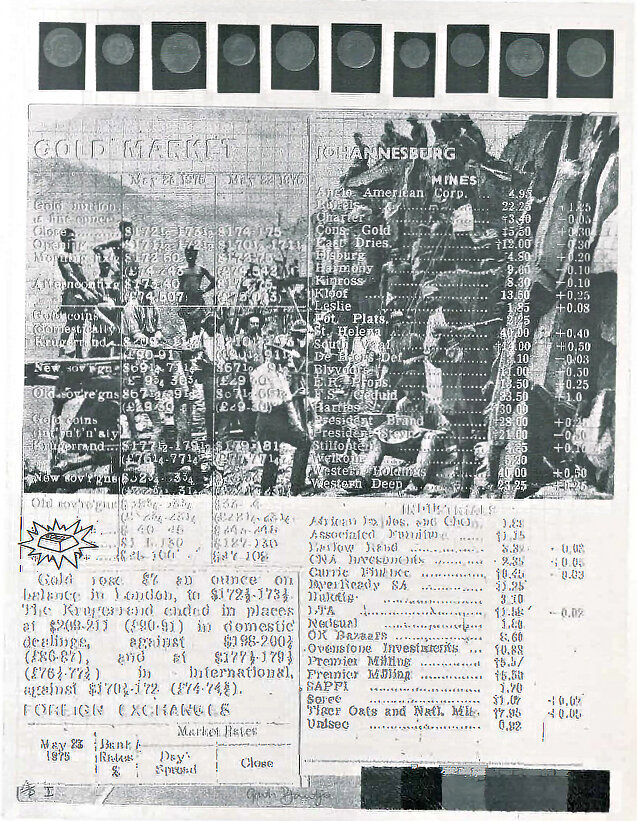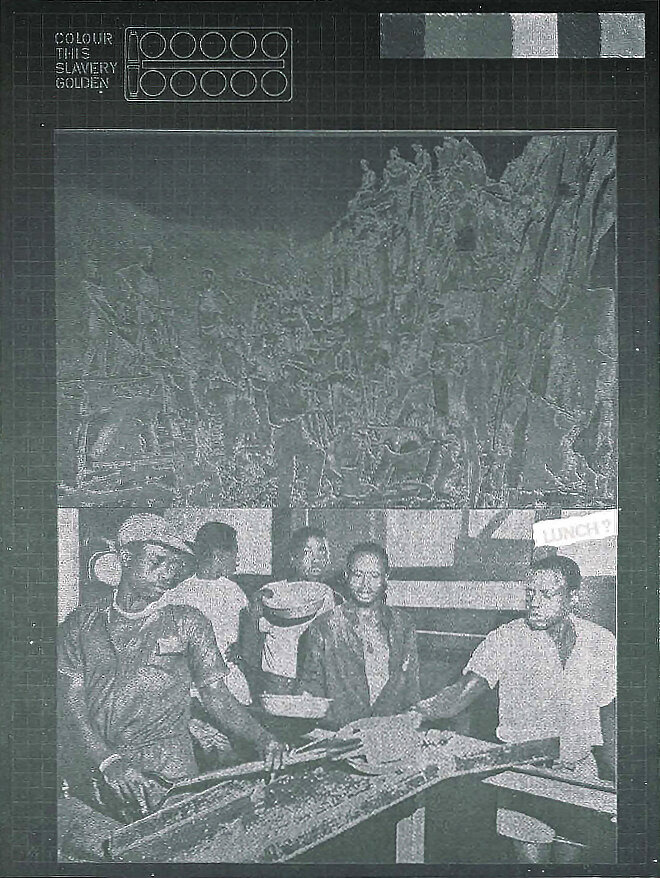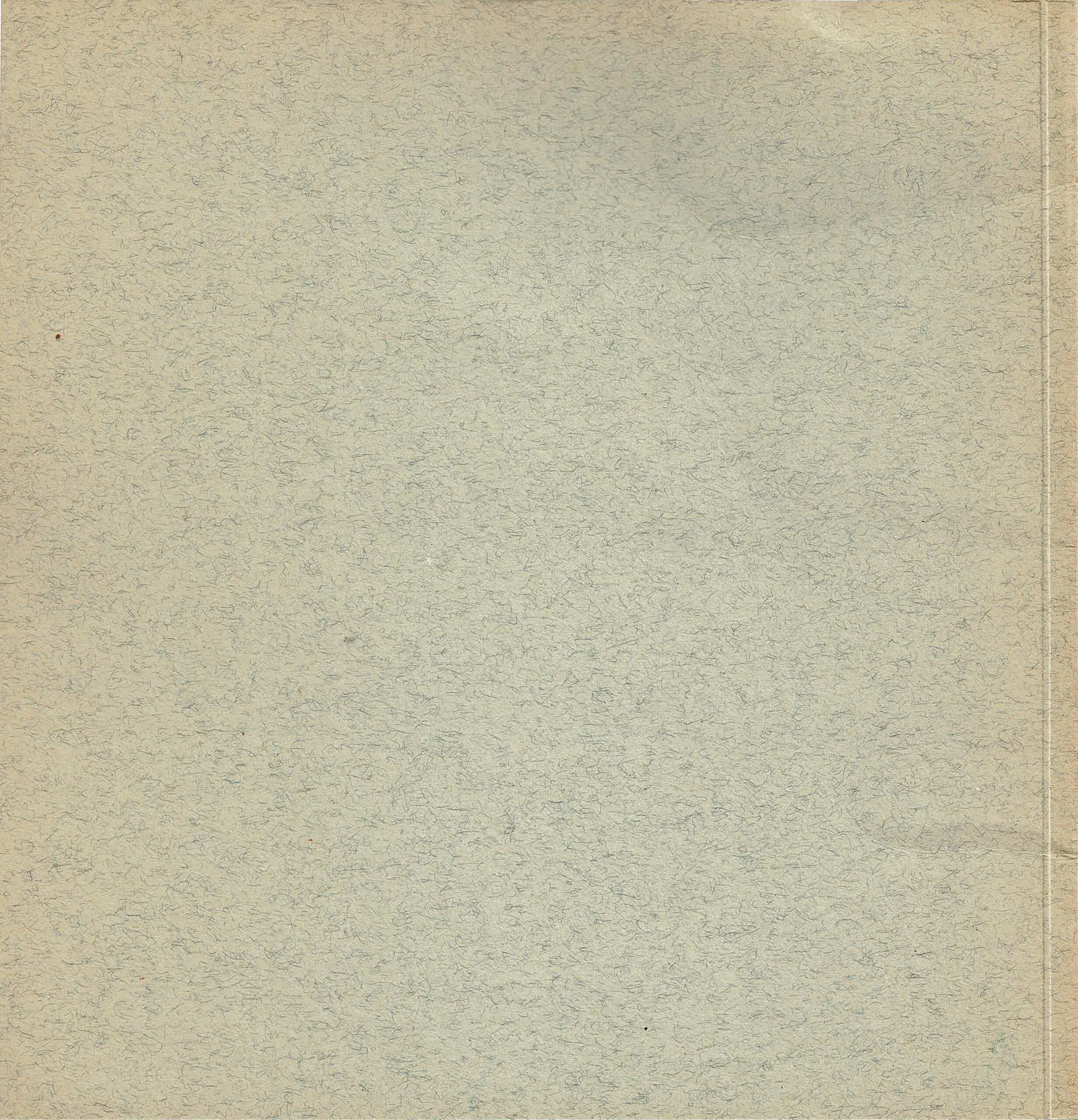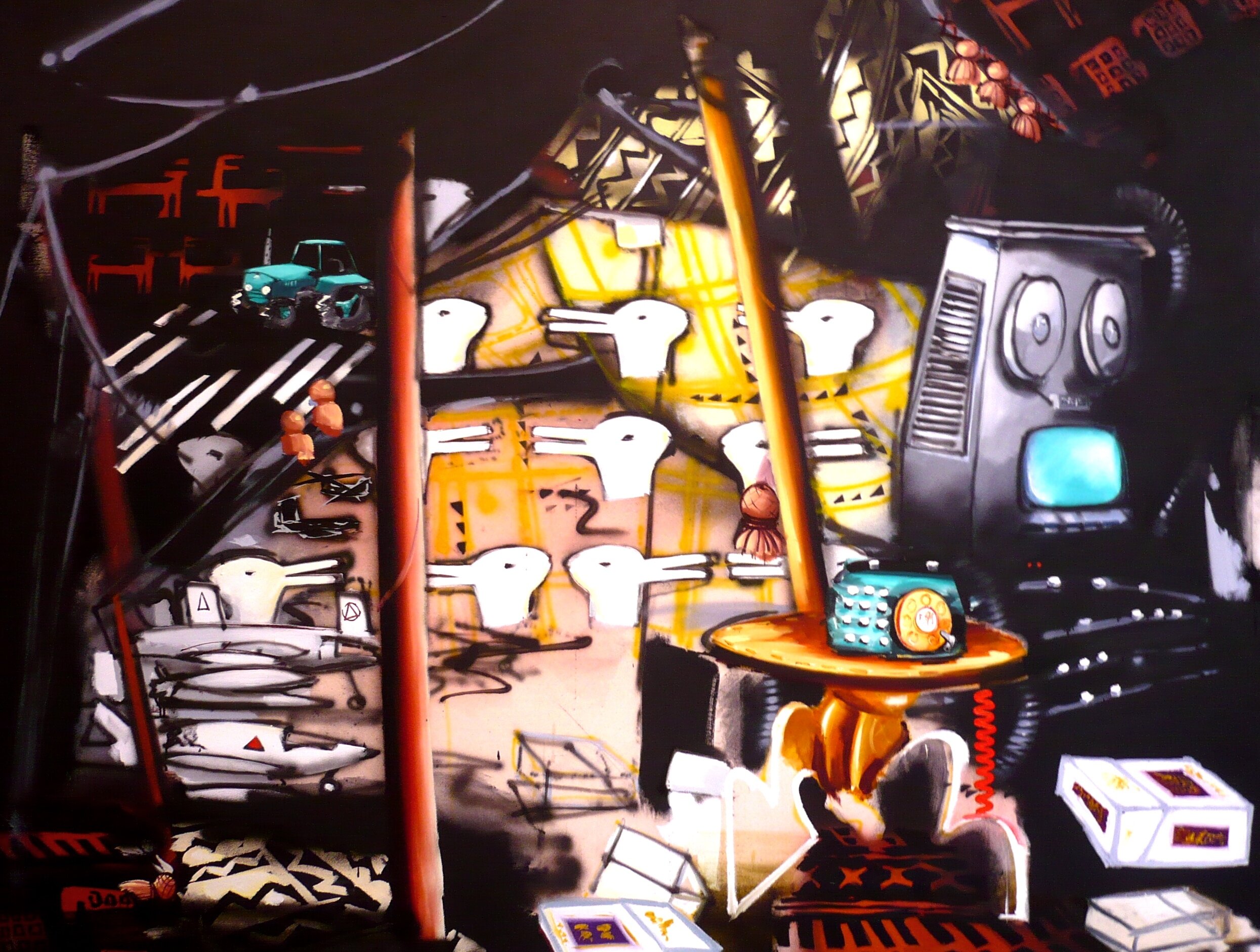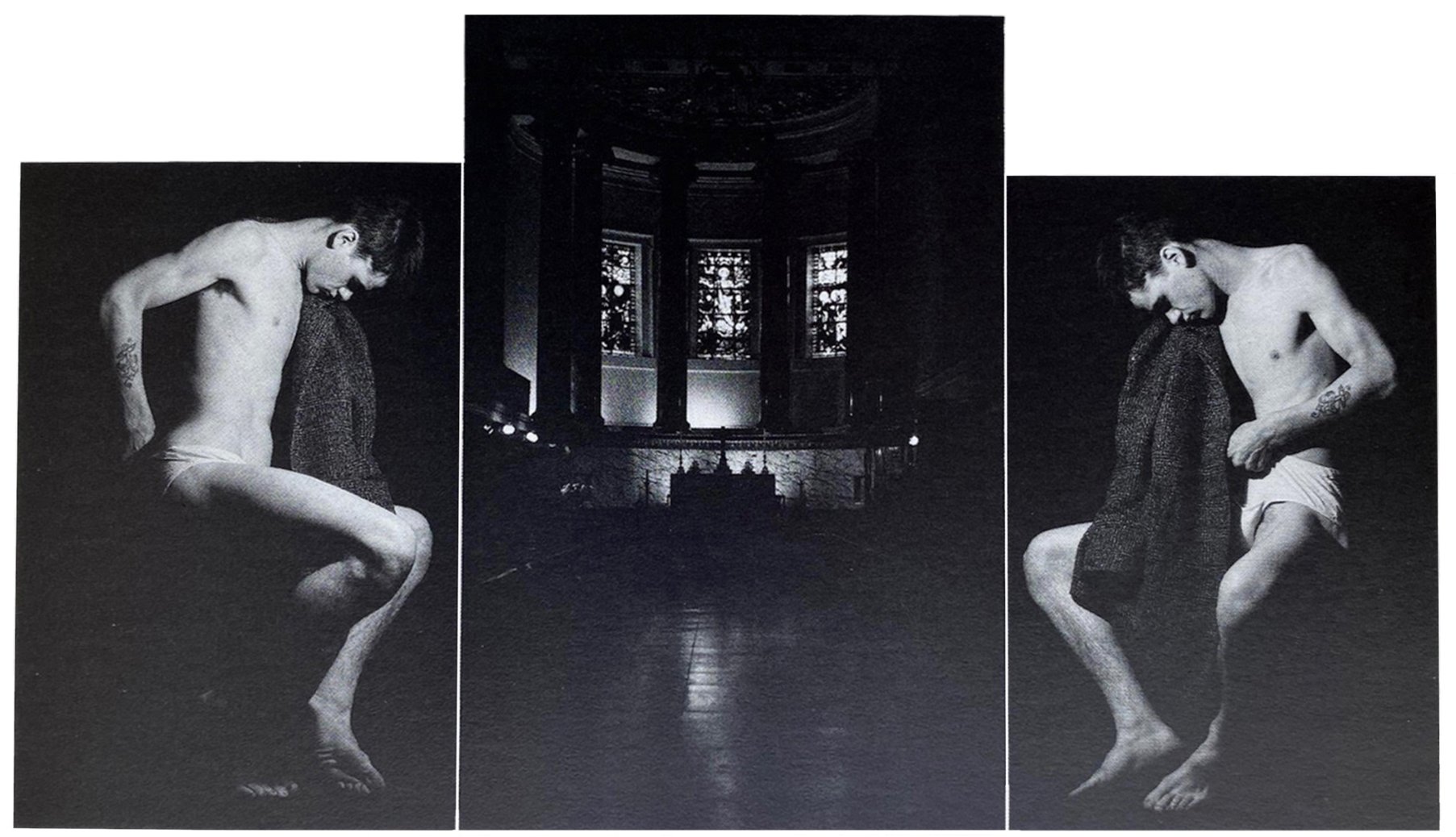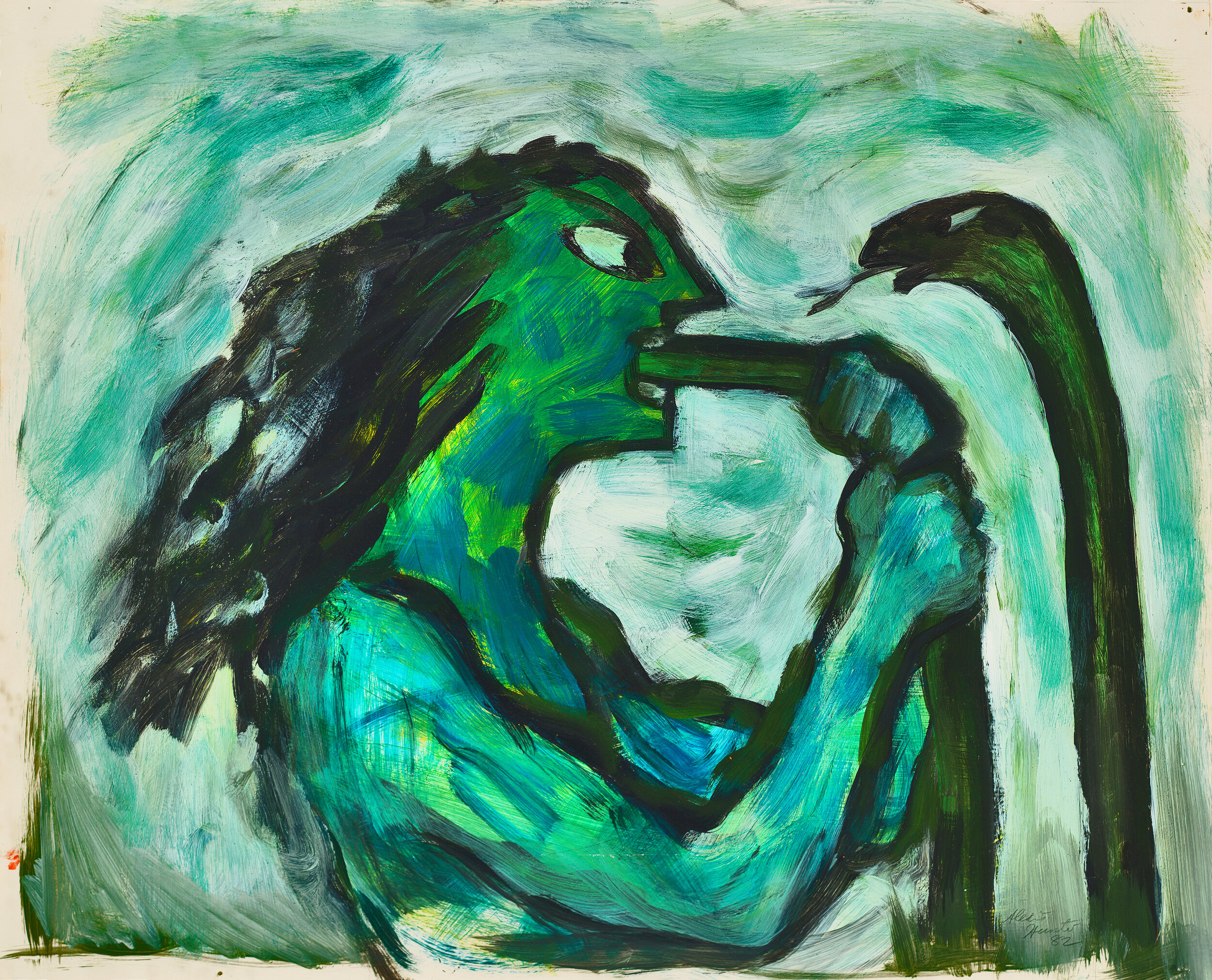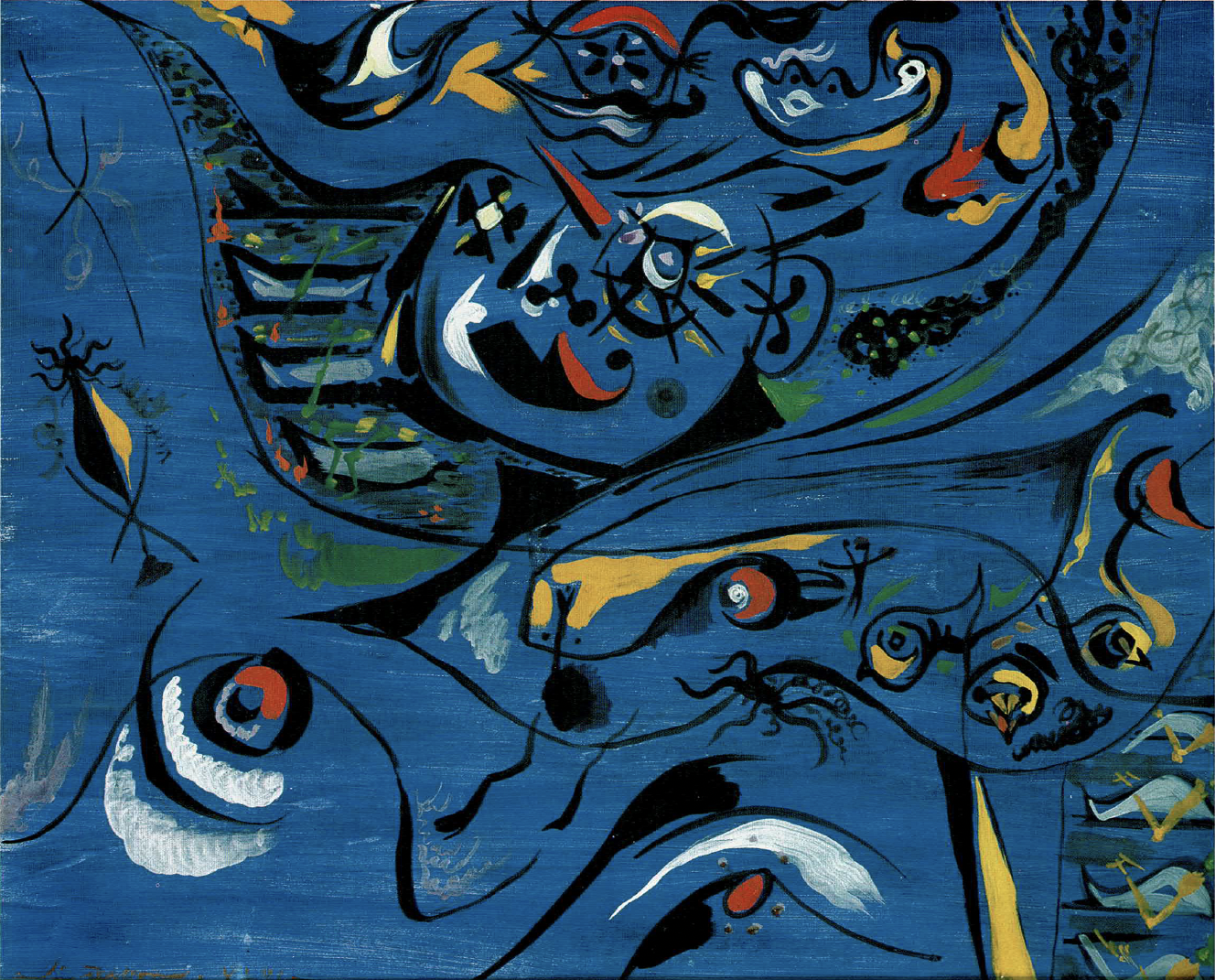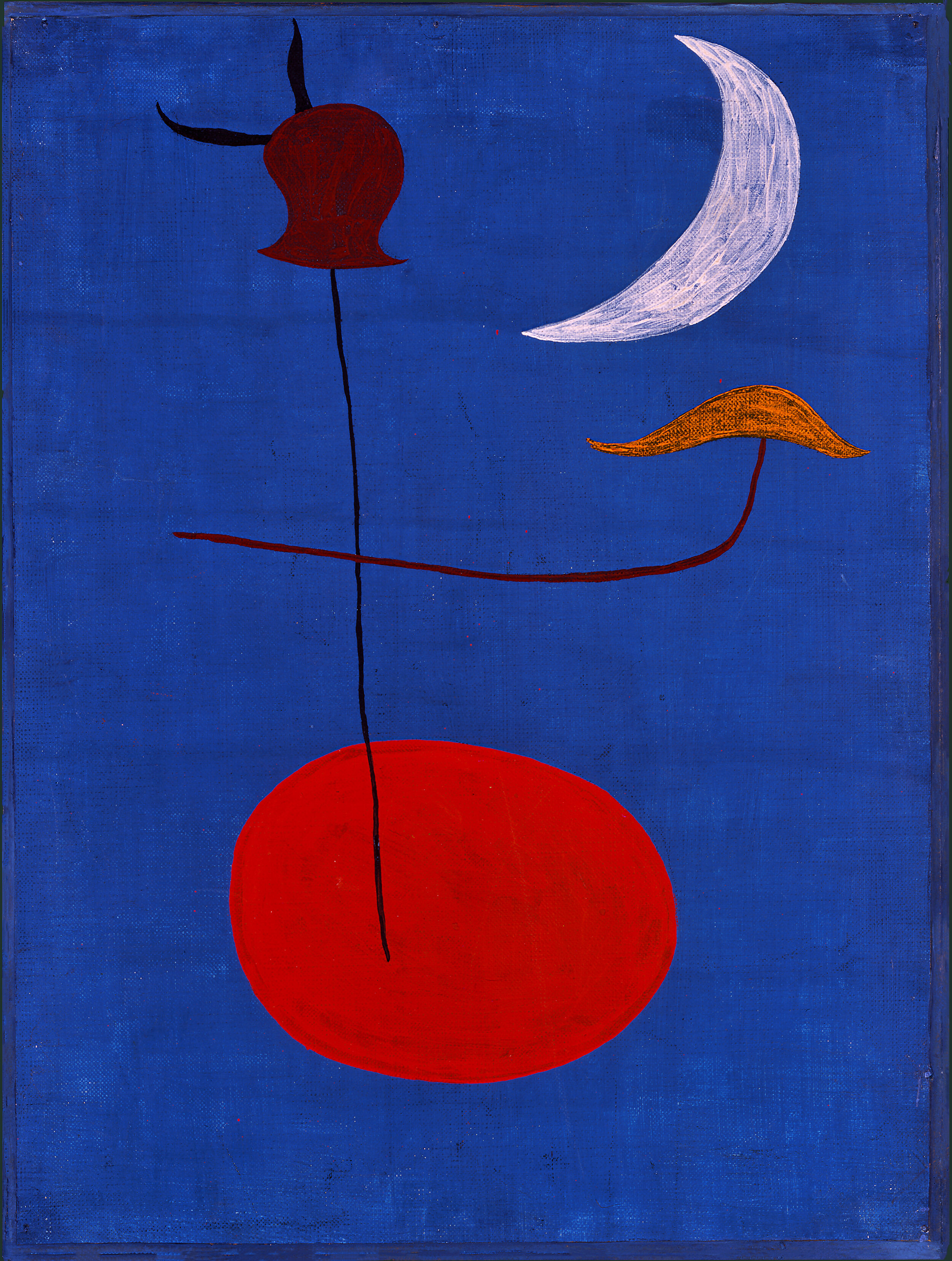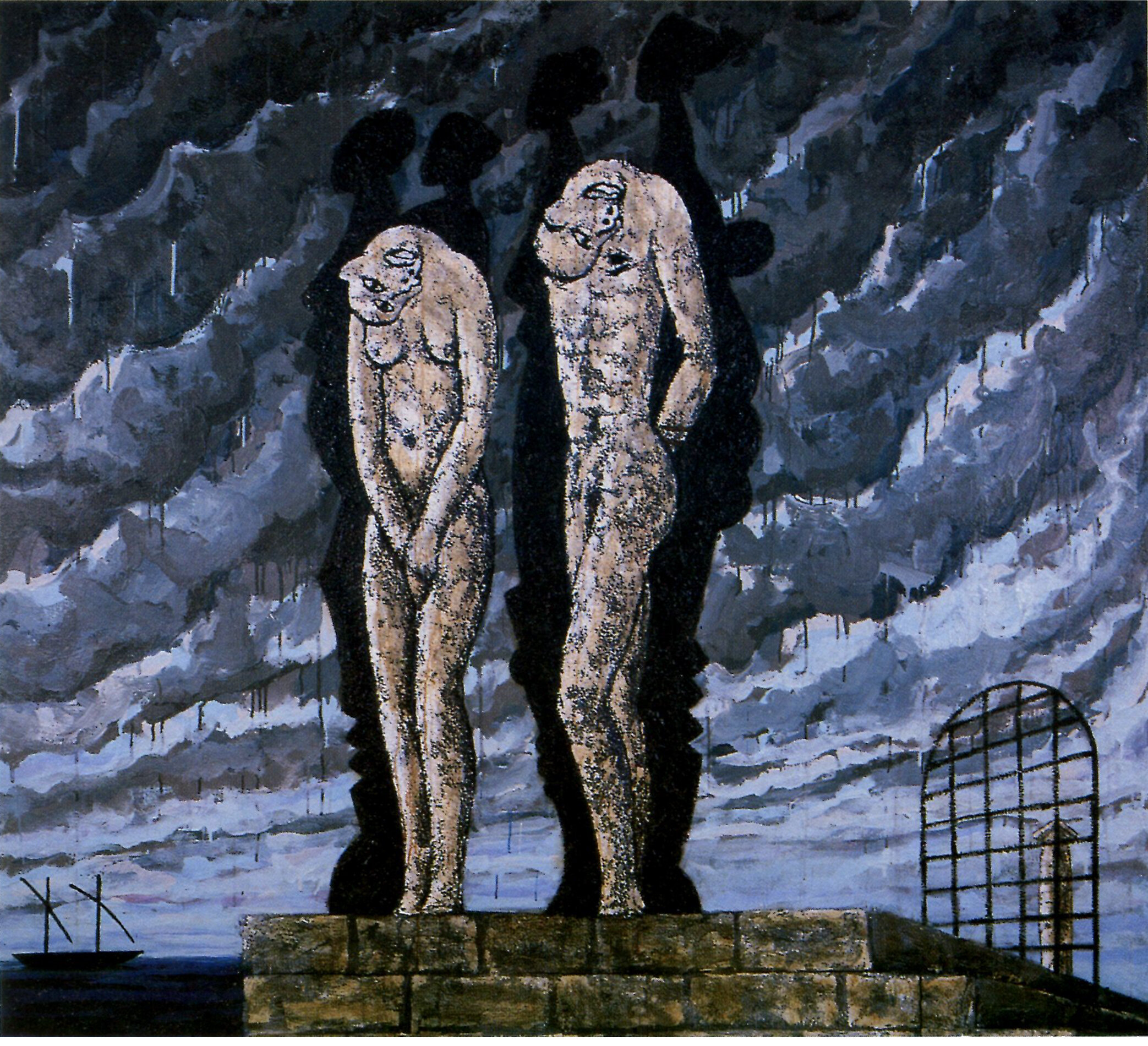EDWARD TOTAH GALLERY
In 1979, Edward Totah opened his gallery.
Moving from Lebanon to London just five years prior, word of the newcomer who Nigel Greenwood observed, “ had the temerity to open a contemporary art gallery in Covent Garden,” spread swiftly around London’s West End. In the sixteen years before he passed, Edward would secure his place as one of the most popular and individualistic dealers of the 1980’s.
Edward Totah
1949 - 1995
Nicholas Serota, former director of the Tate, recounted the dealer’s contagious enthusiasm and “mercurial” temperament. Classifying Edward’s contributions to the art world of ‘80s London as no less than “legendary,” Serota credited Edward with being a true innovator and champion of the arts.
“Edward contributed a remarkable and great sense of generosity to the world of contemporary art… The artists he espoused were always interesting and he brought many shows of work to London which would otherwise have not been seen in this country.”
Nicholas Serota
Former Director, Tate
Letter to Albert Totah, 1997
THE ULTIMATE STRANGER
“Edward Totah has moved into 39 Floral Street, opening a gallery of contemporary art committed to narrowing the Seventies’ gap between the spectator and the work itself – ‘we feel art should be demystified and the spectator allowed to relate to what is being viewed’.”
Edward Totah
Quoted in Gallerist Feature, Art Monthly, 1980
Curious about this new gallerist in town, Nigel Greenwood decided to pay Edward a visit. “When I first met Edward…the exhibition was of Calder mobiles and Léger drawings, but it was the welcome I received that was so memorable. Edward was the ultimate stranger—tall, dark and handsome—arriving from some exotic land.” The dealer’s persona immediately ingratiated him to clients, artists, fellow dealers, and press.
Edward and his daughter, Layla
Photo taken at the 39 Floral Street Gallery in 1984.
Growing up in Lebanon, “long haired and on a motorcycle,” Edward established himself in London as a singularly charismatic and fluid intermediary between artist communities and collectors in Europe, Britain and the United States. Escaping Lebanon before civil war erupted, Edward’s rise in London paralleled the growing yet volatile 1980’s throughout which, Marco Livingstone recalls, Edward remained “consistently and almost naively enthusiastic about the merits of the art he showed,” no matter the commercial odds.
Highly intelligent and quickly bored, Edward was “elevated by his lack of pretense,” retaining a lighthearted yet dedicated approach to life and dealing alike. Charles Gaurino recalls “He always invited you into his office for a drink and a smoke, should you drink or smoke. Art was meant to be enjoyed thus, among friends and without ceremony.”
SOMETHING NEW IN LONDON
“Edward brought light to London, and gifted his trade with grace and humor. Selling art seemed to strike Edward as miraculous proof of some greater good.”
Charles Guarino
Former Artforum Publisher
It is 1979 and Edward is with sharp British prints dealer Alan Cristea at his gallery on Cork Street, when he notices the portfolio of young South African Artist, Gavin Jantjes. Intrigued by the prints, he phones Gavin, who is already on the way back to his home in Germany. Edward boards a flight the next day, forgetting in his fervor a coat, gloves, and that it was -4˚F in Hamburg. Looking over the work, the young gallerist talked about starting “something new in London, something different”—a vision that would soon begin with Gavin’s first show.
Edward’s gallery, a single room just around the corner from Anne Berthoud and Paul Smith, was accentuated by a large bay window that looked out to the street. In 1980’s London, few gallerists were showing artists of color. Even fewer offered solo exhibitions. Edward, unphased by this precedent, committed intuitively to exhibit Gavin’s A South African Colouring Book – trusting the work in both truth and quality. When activists from the White Nationalist Capitalist Front threw a boulder “the size of a football” through the gallery’s bay window, shattering the glass, Edward was undeterred. He closed for maintenance, and reopened again two weeks later.
Gavin Jantjes discusses the lasting impact of A South African Colouring Book with Sothebys
The below catalogue was made by the artist for his series, A South African Colouring Book, and accompanying prints of the Soweto Uprising. The images included here were those shown by Edward in his 1981 exhibition of Gavin’s work.
“The artists look from the outside to the centre, unruffled by the mainstream which sweeps so many in its path. Four of the seven choose to live outside of Britain—emigrés working in suspension, drawing strength from their separateness.”
David Elliott
Catalogue Essay for Seven British Artists, 1986
By the end of 1980, Edward had elected his core group of artists. Showing English-born Derek Boshier, known for the politicized pop paintings he disseminated in the ‘60s, alongside Alexis Hunter, Paula Rego, and Jean-Marc Prouveur, Edward merged the voices of his artists with those of the established contemporary British movement. While other London dealers rooted themselves in the work of seasoned British artists, Edward was interested in developing a diverse program.
Graham Crowley
Indeed Not, 1991
oil on canvas
54 x 42 inches
Further challenging the contemporary narrative, Edward showed interest in those younger and lesser known British artists. Forging relationships with Derek Jarman, Stephen Farthing, Graham Crowley, Stephen McKenna and Ron Arad, Edward sought something new in London not only through the blending of insiders and outsiders, but by providing a platform for budding British artists.
Stephen Farthing
Seen As, 1987
oil on canvas
68 x 81 inches
Richard Hamilton
The Citizen, 1985
edition of 12, dye transfer
19.5 x 19.5 inches
Included in Edward’s 1986 exhibition, Seven British Artists, Richard Hamilton would go on to be acclaimed by the Tate as “one of the most influential British artists of the 20th century,” and a “founding figure of pop art.”
TESTING NERVE ENDS
“On top of all this he was also a great art dealer, because the artists loved him, as indeed the collectors. He showed both historical artists who had not been seen in London before, as well as young, up-and-coming artists.”
David Juda
Director, Annely Juda Fine Art
It is 1980 and Derek Jarman walks into Edward’s gallery. Known for his films Sebastine (1975) and Jubilee (1977), the filmmaker’s experimental works bolstering gay activism and the punk movement were attracting attention. Edward saw beyond the controversy, and would exhibit Jarman’s richly textured works on canvas, as well as work by core members of his creative circle, including Gerald Incandela and Jean-Marc Prouveur.
Jean-Marc Prouveur
Gerald Incandela
This photograph, taken in 1977, by Derek Jarman was a study for his painting George and the Dragon.
Derek Jarman
George and the Dragon, 1979
mixed media
5.5 x 8.5 inches
All three explored the erotic power of classical imagery, with links to Goya and Caravaggio, and Edward’s openness to supporting them was testament to the thoughtful, inclusive gallery culture he cultivated. The Altar Pieces by Prouveur that Edward would show in 1982 (ahead of better-known practitioners such as Robert Mapplethorpe) were described by reviewer Marco Livingstone as “ritualized evocations of outlaw sexuality.” Immediately initiated into the nucleus of artists Edward would form over the course of his career, Jean-Marc elided identification with Neo-Conceptualism and Neo-Expressionism. A true variant of his generation, Edward seemed to have a proclivity for such artists.
The clipping below was taken from a letter Edward wrote to Salomon Grimberg, a collector with an eye for the avant-garde.
Alexis Hunter
Considering Theory, 1982
oil on canvas
20 x 25 inches
Showing New Zealand-born feminist artist, Alexis Hunter, later in 1983 cemented Edward’s loyalty to artists without rank or neat classification. Edward’s shows were praised in Artforum and other leading publications for their disavowal of the mainstream, the work itself precursors for what would become market sensations. Critic Jean Fisher, noted how Alexis Hunter offered a “circumvention” in her paintings, and that their “lifefulness and droll sense of humor…avoid submergence under the stylistic umbrella of current (male) neo-Expressionism.”
Resistant to trends yet keenly attuned to new work, Edward represented the ‘insider outsider’—much like his artists.
“I feel I have the freedom to work emotionally and passionately…I have the support of the Edward Totah Gallery…and I know there are some people who really understand all the work I do, or at least the ideas behind it.”
Alexis Hunter
The life and work of the late Alexis Hunter as told by the artist and Tate Curators
ALWAYS THE EXCEPTION
“Although at the time I had less than no money, the one thing I really liked about him as a dealer was that I genuinely felt selling was a low priority for him, and that his mind was on the art.”
Stephen Farthing
In the decade leading to 1990, the Art Market underwent a rapid ideological and economic transformation. Sweeping up the austere methodology of former days, “business joined hands with creativity” and contemporary art went through a metamorphosis. Global Art Fairs were established, and art galleries proliferated. The art world was now brimming with prospectors, and contemporary art was gilded in glittering gold. Largely clustered on Cork Street, London’s roll call of leading gallerists was Robert Fraser (“Groovy Bob”), Anthony D’Offay, Leslie Waddington, and James Mayor.
Moving to his “new and very beautiful” space at 13 Old Burlington Street, Edward’s gallery assistant, Liesbeth van der Ploeg, thought it quite unusual to move a block away from Cork Street— “that wasn’t really done at the time” noting that the Cork Street crowd were fixtures of the scene. True to form, however, Edward did not pursue an ordinary gallery in location nor model. Often using his gallery as a conceptual space, Edward’s program of artists and exhibitions remained varied and independent from his new neighbors. Mounting exhibitions like John Newling’s “Furniture Sculpture” while Saatchi showed up-and-coming YBA artists and D’Offay exhibited Abstract Expressionist painters, Edward remained distinct and undaunted.
13 Old Burlington Street
This photo, taken in 1992, shows Suzanne Treister’s exhibition of Fictional Videogame Stills on the first floor of Edward Totah Gallery.
“I was immediately impressed by Edward's easy charm and sharp mind. He was so unlike other art dealers…Edward was always the exception.”
Graham Crowley
Edward Totah
Suzanne Treister
This photo was taken on February 5, 1992 at the opening of Suzanne Treister’s exhibition at Edward Totah Gallery.
“ESOTERIC COSMOLOGIES”
“What was so interesting about him is that he had an eye for the extraordinary; he was very avant-garde”
Anne Berthoud
Gallery Director and Curator
Kenny Scharf
Seemotional, 1990
acrylic, silkscreen, and oil on canvas with gold frame
59 x 49 inches
In the early ‘90s, Louise Hallet and Edward attended Art Basel. The fellow dealer recalled a cannabis resin sculpture on the top floor, which Edward chipped away at before leaving each night to keep his supplies topped up. The trend caught on, and left the sculpture much smaller by the end of the event.
“When we learned the opening was canceled because of a bomb scare, he decided to have a small party at his house and turned it into a fun time…instead of dwelling on the bad we just re-shifted and kept it moving. The show was a huge success…I felt we had made an impact.”
Kenny Scharf
Unafraid to break tacit rules, it is no surprise that when London hosted its Second International Art Fair Edward pushed the envelope. While critics viewed Fun Gallery, Edward’s art fair invitee, as a punchline, their roster of artists included the likes of Keith Haring, Jean-Michel Basquiat and Kenny Scharf— who Edward would show again in 1992. Beyond the “aerosoled surprises” of the East Village, he exhibited master draftsman Saul Steinberg, Chilean Roberto Matta (garnering a New York Times review), and Bronx-born Pop art precursor Larry Rivers. He also brought Joseph Albers to the UK, before his work would be picked up by any other institution.
Patti Astor discusses the Fun Gallery and its Graffiti artists
Photograph by Allen Frame, Courtesy of Gitterman Gallery
“The Edward Totah Gallery has organized a show drawn from Albers’ ‘Homage to a Square’ paintings…Albers’ work is often considered didactic and severe. But the selection at Edward Totah reveals that, on the contrary, it is subtle and responsive.”
Paul Overy
Review of Joseph Albers at Edward Totah Gallery
Enrico Castellani
Superficie argento, 1986
nitro paint on relief canvas
47 x 47 inches
Edward’s Italian program was similarly robust, and deeply committed. Showing work by Lucio Fontana, Enrico Castellani, Alighiero Boetti, and Emilio Tadini, many for the first time in London, brought a new aesthetic to audiences there, fostered fresh ground for association, and provided a welcome challenge for British art critics, one of whom described the “unalloyed joy” of the work, revelatory in its departure from contemporary British painting.
“Edward Totah provided us with an opportunity to see more Paolini, more Manzoni and more Fontana. Their work (involving esoteric cosmologies)…is suave and cerebral.”
Sanda Miller
Review of Italian Group Show, Art Monthly, 1989
Emilio Tadini
La moglie di Loth, 1988
acrylic on canvas
59 x 79 inches
“…assertive, richly textured and exquisitely beautiful…At first sight of these works, I was reminded of my first experience of Tintoretto’s paintings.”
Patricia Bickers
Review of Arcangelo, 1987
Lucio Fontana
Concetto spaziale, Attese, 1965
water-based paint on canvas
39 x 29 inches
This image was taken from the Lucio Fontana’s series, Tagli. This collection of paintings outlined the core ideology of Spatialism, the movement Fontana is credited with founding.
Ron Arad
Well Tempered Chair, 1987
tempered stainless steel
Edward cajoled those around to loosen the ways they related to work – “a radical way of sitting” was the header for Deyan Sudjic’s Guardian review of an exhibition at Edward’s space featuring furniture by Israeli-British designer Ron Arad. “Totah is happy to let you sit on Arad’s work…his exuberant folded and cut metal chairs, Totah makes a conscious gesture.” Ron Arad recalled how astute Edward was, remarking how “very brave” he was to show his work in a gallery at that time.
Beyond Edward’s space in London he would collaborate closely with Galleria Seno in Milan, and go on to open a space in New York. He embodied a kind of dealer fearlessness, consolidating networks and contacts across multiple cities long before it was the norm.
THE BACK ROOM
“He had a very un-commercial program for his contemporary artists…unlike what the art world has become now. He committed to them, while maintaining a program that could make money ‘behind the scenes’.”
Marco Livingstone
Art Historian and Independent Curator
Edward’s identity as a dealer was developing, and he balanced a bold public program in the gallery with an impressive catalogue of established Masters. Buyers would come to know one or both sides. Edward’s long-standing partner behind the scenes for acquisitions and sale of masterworks was his brother Albert. Their collaboration would bring rare pieces to a growing and loyal following of collectors, and was testament to their knowledge and vision. Transparencies, the gem-like color reproductions of work that could be held up to a bulb or placed on a light box, would showcase work they had access to – the heady tones of a Picasso or Miró, the lithe mystery of a Modigliani, the profound symbolism of the Surrealists. For many, the best examples of work by these artists.
Tom Wesselman
Great American Nude #55, 1964
acrylic and collage on board
48 x 60 inches
Jean DuBuffet
L’Automobile, fleur de l’industrie, 1961
oil on canvas
85.5 x 65 inches
Domenico Gnoli
Shoulder, 1969
acrylic on canvas
65 x 55 inches
Carlo Carra
Simultaneità, La donna al balcone, Ragazza alla finestra, 1912
oil on canvas
58 x 52.5 inches
André Masson
Le voyage, 1943
oil and tempera on masonite
20.5 x 25.5 inches
Martial Raysse
Fille aux 7 couleurs, 1963
mixed media
40 x 52 inches
Michelangelo Pistoletto
Conversation, 1962/79
silkscreened paper collage on stain-less steel
90.5 x 47 inches
Giulio Paolini
IF, 1970
photo on fabric
47.25 x 47.25 inches
Yves Tanguy
Vers d'anciens appels, 1946
oil on canvas
28 x 23 inches
René Magritte
Au seuil de la liberté (On the Threshold of Liberty), 1937
oil on canvas
94 x 73 inches
Joan Miro
Study for Spanische Tanzerin, 1926
oil on paper
14.5 x 11 inches
Giorgio Morandi
Natura Morta, 1920
oil on canvas
14 x 16.5 inches
Nicolas de Staël
Compotier et chandelier, 1954
oil on canvas
24 x 32 inches
Henri Matisse
Odalisque au fauteuil noir, 1942
oil on canvas
15 x 18.25 inches
Pablo Picasso
Nu au chapeau assis dans un fauteuil, 1965
oil on canvas
46 x 35 inches
Josef Albers
Study for Homage to the Square: R-J .L, 1968
oil on masonite
32 x 32 inches
Gino Severini
Still Life, 1916/17
oil on canvas
21.5 x 18 inches
Yves Klein
Monocrome bleu, 1957
pigment and oil on board
8.5 x 7.5 inches
Gerhard Richter
Two Women with Cake, 1982
oil on canvas
30 x 39.5 inches
“AN EYE FOR THE FUTURE”
“Edward got it before other people, before MoMA, before everyone”
Ron Arad
Alighiero Boetti
Mappa, 1983
embroidery on fabric
45 x 69 inches
Alighiero Boetti
embroidery on fabric, 1982
94.5 x 94.5 inches
One of Edward’s greatest contributions as a dealer, and one of his rarer talents, would be his prescient insight – demonstrated in the success enjoyed by artists whom he had supported early in their careers.
“Standing in silence in the second floor gallery space in front of one of Boetti’s tapestries, the one that Boetti had woven Edward’s daughter’s name into, he broke the silence saying, ‘I have been trying to persuade the Tate that they should buy two of these but they appear not to be interested’.”
Stephen Farthing
Believing Edward’s space to be one of the first galleries in London to show artists of color, Gavin Jantjes went on to sell every work in Korabra – most to major British institutions, that had debuted with Edward Totah in 1986. Gavin would later show at the Smithsonian in D.C., and be appointed a Senior Consultant at the National Museum of Art, Architecture and Design in Oslo. Paula Rego, who was first represented by Edward, would be the first artist-in-residence at the National Gallery in London, with the Tate acquiring 46 of her pieces.
Paula Rego
Untitled, 1987
acrylic on paper
44 x 30 inches
Gavin Jantjes
Untitled, 1985
sand, tissue paper, pigment and acrylic on canvas
71 x 79 inches
“I got to know most of the artists he showed, like Ron Arad, Stephen Farthing, Gavin Jantjes, Yuko Shiraishi, Susie Treister and those who would come regularly from abroad like Boetti. He showed rather a lot of women - Alexis Hunter and Paula Rego too - for those days, when galleries showed predominantly male artists.”
Ann Gallagher
Former Director of Collections, Tate
Kenny Scharf, now represented at TOTAH in New York, would become one of the most loved East Village era icons. And Boetti, of course, would enter the canon, with a solo show, Game Plan, at MoMA, Reina Sofía, and the Tate Modern in 2012.
Kenny Scharf
Dr. Pepper Floats, 1990
acrylic and oil on linen
72.5 x 59 inches
Kenny Scharf
Orb, 1991
acrylic, oil & silkscreen ink on canvas with astro-turf & aluminium frame
53 x 53 inches
“On the Tuesday after Edward’s death I was scheduled to lecture in Oxford where I was the head of the University Art Department. The faculty all knew Edward well and so did many of my guests . About twenty of us gathered in my studio after the lecture and raised several glasses, some red and some white, of Chateau Musar, a wine made in Lebanon. We did this in memory of Edward who should have been with us.”
Stephen Farthing
TOTAH
Edward Totah, 1984, image courtesy of Liesbeth van der Ploeg
My Uncle Edward had a profound impact on me and on the ones who were close to him. From the way he dressed, his frankness, approaching everything with humor and dry wit, even how he refused to have formal furniture or hang paintings in his home, preferring instead to lean works on the wall. He was unlike anyone I knew. It was my Father’s idea to open the gallery in London in the late ‘70s, and he thought my Uncle should run it. Things like that came easily to Edward. He had an air of nonchalance about him combined with a formidable insight. He harbored an insider-outsider ethos that I very much relate to.
One of the reasons I founded TOTAH was to continue my Uncle’s steps which were interrupted by his unexpected passing; to realize a space filled with a strong sense of freedom, warmth, and a deep connection to the creative process and its impact on our audience. Edward is perennially partnered with us here at the gallery; and I’m thankful for what I was able to absorb through him. This exhibition pays homage to who he was, but also what he built with his brother Albert, and all the ways it continues to reverberate through our work today.
I wish to extend a special thank you to Nicole Knyfd and Sophia McKinnon who worked relentlessly on this project, to the TATE for sharing the Edward Totah Gallery archives with us, and a heartfelt thank you to all who contributed to the making of this online exhibition:
Albert Totah, Eduardo Almonte, Ron Arad, Anne Berthoud, Patricia Bickers, Bryan Biggs, Harriet Bridgeman, Aretha Campbell , Graham Crowley, Robin Dutt, Peter Eaves, David Elliott, Stephen Farthing, William Feaver, Ann Gallagher, Andrew Gent, Tom Gitterman, Adrian Glew, Salomon Grimberg, Jeffrey Grunthaner, Charles Guarino, Louise Hallet, Paul Harbutt, Grant Henry, Marianne Hultman, Gavin Jantjes, David Juda, Nathalie Karg, Marco Livingstone, Arturo Marangoni, James Mayor, Kenny Scharf, Alessandro Seno, Nicholas Serota, Yuko Shiraishi, Kuldeep Singh, Deyan Sudjic, Layla Totah, Talal Totah, Suzanne Treister, Liesbeth van der Ploeg.
— David Totah
EXHIBITION HISTORY
1980
6 December 1979 - 19 January 1980
Joe Tilson
7 February - 7 March
Gavin Jantjes
18 March - 19 April
Angelo Cagnone
29 April - 24 May
Terence Clarke
3 - 28 June
Group Show: “A women’s view”
4 - 26 July
“Ritual Masks from Mexico”
1 - 29 October
Peter Sylveire
4 - 29 November
Bengt Lindstrom
1981
6 December - 17 January
Group Show: “Works on Paper”
22 January - 21 February
Franco Gentilini
3 - 28 March
Franz Gregor Hiltner
8 April - 2 May
Jean-Marc Prouveur
12 May - 4 June
Victoria Bartlett
June
Group Show: Masson, Doucet, Matta, Poliakoff, Antes
September
Gavin Jantjes
1 - 31 October
Alexis Hunter
4 - 28 November
Adrian Hemming
1982
8 December 1981 - 27 January 1982
Group Show: “Paintings and Drawings”
2 - 27 February
Jean- Charles Blanc
3 - 31 March
Roger Selden
6 - 30 April
Terence Clarke
4 - 30 May
Kyriakos Katzourakis
1 - 26 June
Jean-Marc Prouveur
1 September - 9 October
Paula Rego
14 October - 13 November
Alexis Hunter
18 November - 23 December
Derek Jarman
1983
12 January - 12 February
Gavin Jantjes
17 February - 19 March
Pablo Picasso
24 March - 23 April
Larry Rivers
28 April - 27 May
Anton Heyboer
1 June - 16 July
Fernand Léger
11 August - 29 September
Group Show: Louise Blair, Alex Booker, James Brown Maurice Cockrill, Mikey Cuddihy
3 - 29 October
Emilio Tadini
1 - 30 November
Elvira Bach
2 - 23 December
Franz Gregor Hiltner
1984
10 January - 14 February
W. Lam & A.R. Penck
8 February - 3 March
Alexis Hunter
April - May
Paula Rego
1 - 30 June
Group Show: “Pittura Colta”
4 - 31 July
Maurice Cockrill
3 - 31 August
Group Show: “Amsterdam - Paris”
4 - 29 September
Jean-Marc Prouveur
4 October - 3 November
Stephen Farthing & Graham Crowley
7 - 30 November
Jo Baer & Bruce Robbins
December
Picasso
6 - 12 December
Group Show: Picasso, Leger, Mariani, Hartung, Robbins, Matta, Rivers,
Bartolini, Cockrill, Jarman, Booker, Kinley, Hunter, Brown, Penck,
Rego, McKenna, Baer, Bartlett, Blair
1985
16 January - 16 February
Group Show: “3 Painters from Berlin”
25 February - 16 March
Picasso & Graham Crowley
20 March - 20 April
Group Show: “Animals”
30 April - 25 May
Group Show: “Seven Artists from New York”
29 May - 29 June
Derek Boshier
5 July - 30 August
Group Show: “Nature Morte”
4 September - 5 October
Paula Rego
10 October - 2 November
Stephen McKenna
6 November - 20 November
Francis West & Group Show: Matta, Soden, Farthing, McKenna, Cockrill
1986
4 December - 25 January
Suzanne Treister & Maurice Cockrill
11 February - 8 March
Claudio Mario Mariani & Group Show: Castellani, Masson, Salvo, McKenna, Bartolini
12 March - 12 April
Stephen Farthing
17 April - 10 May
Group Show: “Figure and Landscape 7 British Artists”
16 May - 14 June
Donald Lipski & Gerald Incandela
19 June - 31 July
Group Show: “Italian Painters”
4 - 27 September
Gavin Jantjes
2 October - 1 November
Salvo, J.G. Dokoupil & Milan Kunc
6 November - 6 December
Stephen McKenna
10 December - 20 December
Jean-Marc Prouveur & Group Show: “Portuguese Landscapes and Cardinal Sins”
1987
8 - 31 January
Julia Condon
4 - 28 February
Paul Harbutt
5 March - 4 April
Paula Rego
8 April - 12 May
Arcangelo
14 May - 6 June
Derek Boshier
10 June - 4 July
Ron Arad
8 July - 31 July
Sophie Ryder
4 September - 3 October
John Newling
7 - 31 October
Graham Crowley
4 - 28 November
Stephen Farthing
December
Enrico Castellani & Group Show: McKenna, Masson, Robbins, Claudio Parmiggiani
1988
19 January - 12 February
Suzanne Treister
1 March - 15 April
André Masson
19 April - 13 May
Yuko Shiraishi
17 May - 23 July
Josef Albers
October
Stephen McKenna
December
Alexander Calder
1989
2 February - 21 March
Group Show: “Italian”
21 March - 29 April
Alighiero E. Boetti
4 - 30 May
Jean-Marc Prouveur
June - July
Group Show: Poliakoff, Masson, Bazaine, Léger, Lanskoy, Calder, Vieira da Silva, Boetti, Richter, Wesselmann, Raysse, Polke
3 - 28 October
Graham Crowley
2 -25 November
Milan Kunc
28 November - 16 December
Group Show: “Selected Americans”
1990
8 - 27 January
John Newling
1 February - 3 March
Maurizio Mochetti
14 March - 7 April
Valerio Adami
11 April - 5 May
Suzanne Treister
9 May - 2 June
Yuko Shiraishi
6 June - 15 July
Group Show
6 - 29 September
Gavin Jantjes
17 October - 10 November
Jiri Georg Dokoupil
21 November - 20 December
Group Show: Treister, Kunc, Farthing, McDermott & McGough, Salle, Cipis, Dokoupil, Condo
1991
9 - 30 January
Emilio Tadini
4 February - 2 March
Stephen Farthing
5 - 30 March
Tom Wesselmann
24 April - 25 May
Denis Masi
10 June - 12 July
Jean Tinguely
10 September - 5 October
Graham Crowley
15 October - 9 November
Alighiero E. Boetti
1992
15 November - 17 January
Max Bill
5 February - 14 March
Suzanne Treister
7 April - 23 May
Kenny Scharf
1 June - 24 July
Group Show: Scharf, Condo, Kunc, Dokoupil, Wesselmann
14 September - 17 October
Peter Nagy
20 October - 14 November
Yuko Shiraishi
1993
19 November - January
Peter Phillips
March
Ron Arad











